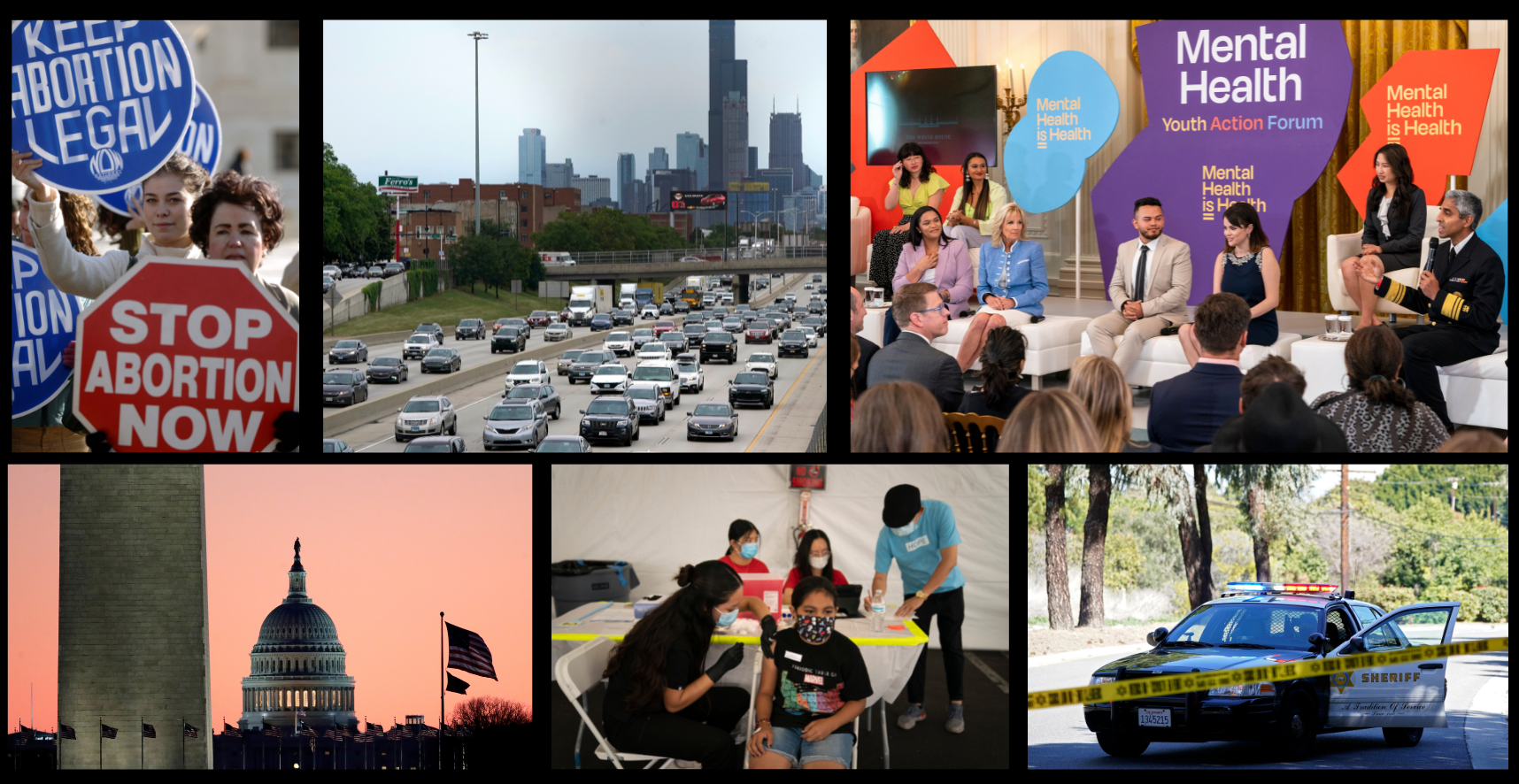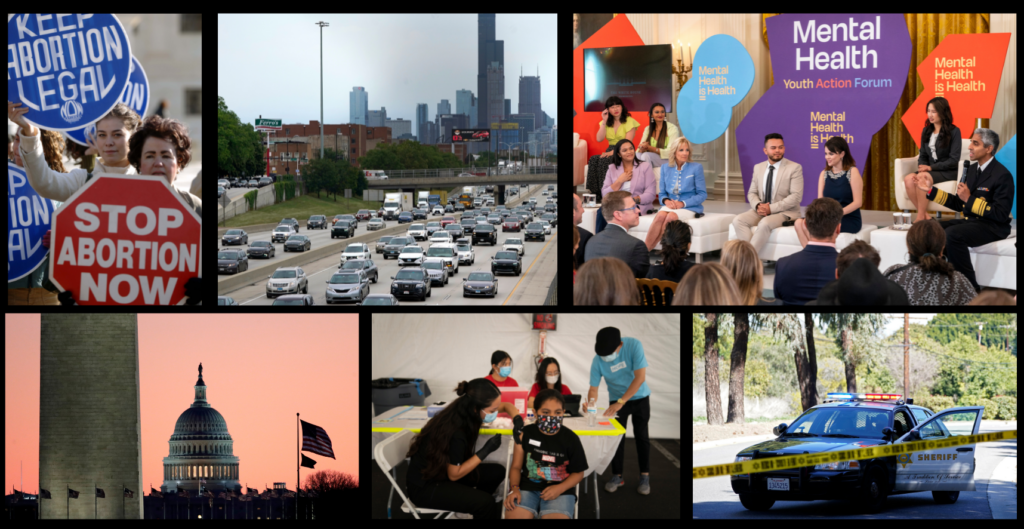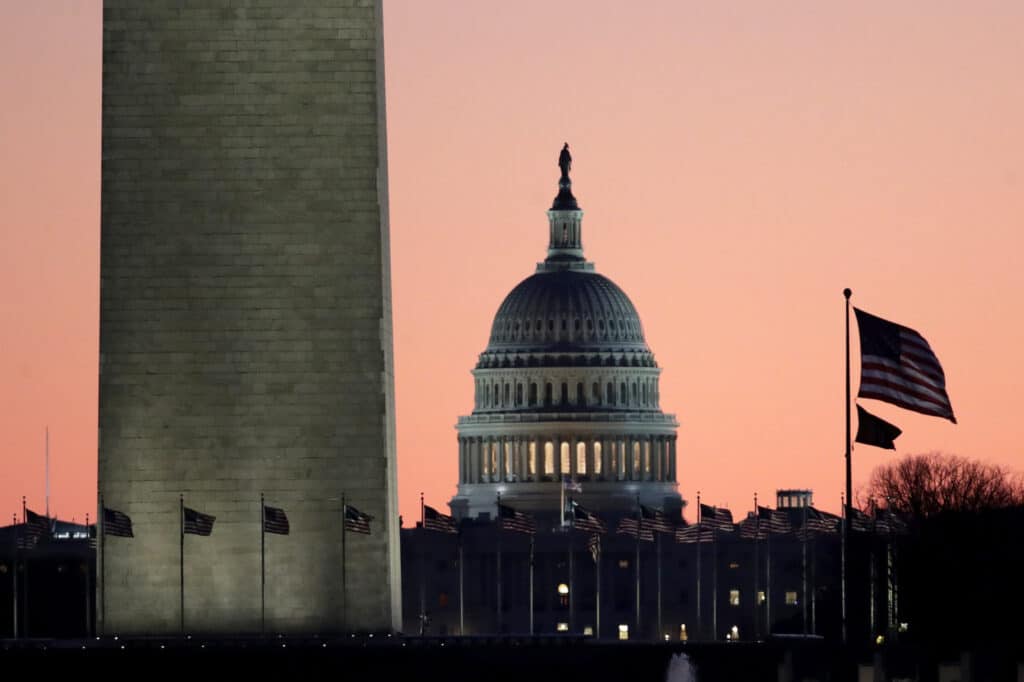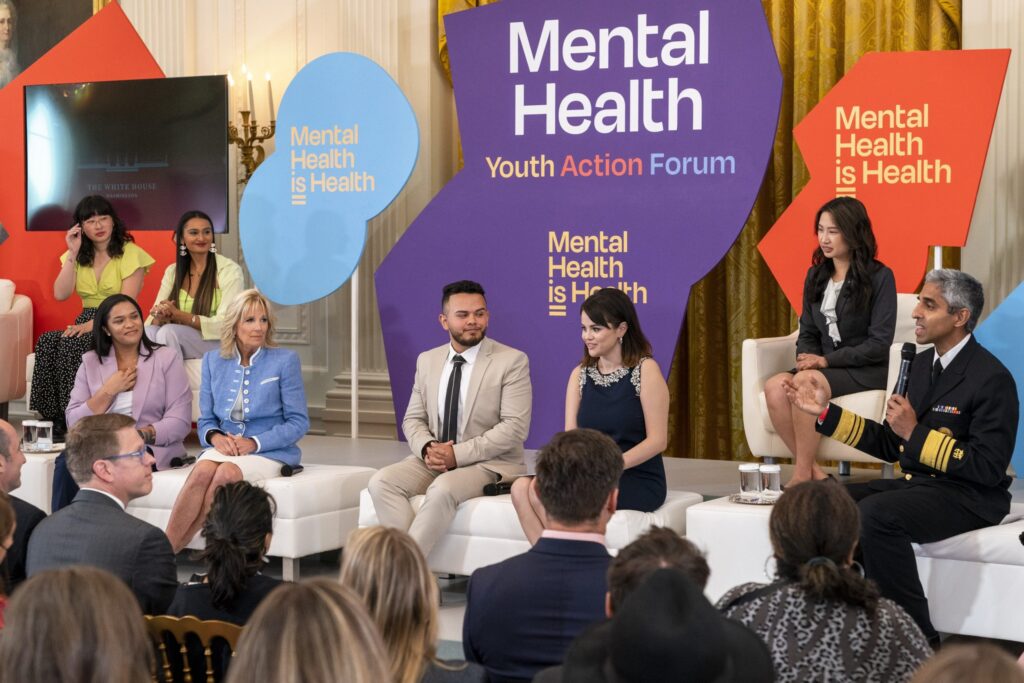
© 2022 AP Photo/Jessical Hill
If news organizations want to win over new audiences at a time of substantive transition in journalism, growing misinformation, and multiple crises in the world, we need to understand the news habits and interests of Americans 40 and younger. These Millennials and members of Generation Z will soon become the industry’s dominant generations of news consumers and subscribers. What news topics do they follow most often, and how do they get that coverage?
New in-depth analysis by the Media Insight Project, a collaboration of The Associated Press-NORC Center for Public Affairs Research and the American Press Institute, outlines how this group follows and interacts with information critical for both their personal lives and how we function collectively as a society.
This analysis dives more deeply into data released in August, which was based on a survey of nearly 6,000 individuals ages 16 to 40. That report, Fatigue, traditionalism, and engagement: News habits and attitudes of the Gen Z and Millennial generations, showed that people in this group are active consumers of a wide range of topics from a variety of sources, including traditional news outlets and individual influencers.
The varied news diet of this group includes “lifestyle” topics like celebrities and sports, but Millennial and Gen Z consumers also follow a range of topics classified as “hard news” and “news you can use.” [ref The survey asked about 29 different news topics and which ones respondents follow. The topics were broken up across three categories: “hard news,” “news you can use,” and “lifestyle.” Detailed follow-up questions were asked for the “hard news” and “news you can use” topics that people reported following most closely. ]
Understanding how this age group consumes and processes news in these latter two categories is critical for news organizations today given threats to democracy, the difficulties of living through the COVID-19 pandemic, the continued spread of misinformation, and other crises. The need is magnified by the news fatigue this group is feeling as well as its low trust in the media, trends we identified in the first report.
In the “hard news” category, we found that the topics followed most often by Gen Z and Millennials are:
- National politics and government, with 15% selecting it as the topic they follow most often.
- Social issues such as abortion, gun policy, or LGBTQ issues, selected by 15%.
- Crime and public safety, chosen by 13% of respondents.
In the “news you can use” category, the topics most followed by this group are:
- Information on traffic, transportation, and weather, with 21% of Gen Z and Millennials selecting it as the topic they follow most often.
- Practical COVID-19 information, chosen by 20% as their most-often followed topic.
- Information related to health or mental health, most followed by 15% of Millennials and Gen Z.
Further, to help news organizations attract and sustain Gen Z and Millennial news consumers, this report provides a detailed profile of those who follow these topics most often (for brevity, at times referred to as “close followers” of these topics), including demographic characteristics as well as consumer traits such as their likelihood of paying for news, sharing it, or engaging with it in other ways.
Key takeaways:
- The most popular topics are followed by a diverse mix of Gen Z and Millennials. Topics such as crime and public safety, information about COVID-19, health and mental health, and information on traffic, transportation and weather are closely followed among Gen Z and Millennials across age, gender, race and ethnicity, type of community, and education level. The audience for these topics resembles the overall demographic makeup of those ages 16 to 40, suggesting that broad audiences are possible for many of the beats newsrooms traditionally prioritize.
- However, there are generational differences in the makeup of the audience for both national politics and social issues. The audience for national politics skews toward older Millennials, while the audience for news on social issues skews toward Gen Z. [ref This study examines Gen Z (16- to 24-year-olds), younger Millennials (25- to 31-year-olds), and older Millennials (32- to 40-year-olds).]However, neither audience is dominated by one age group. Older Millennials account for 49% of those who follow national politics most often, with younger Millennials at 29% and Gen Z at 23%. In contrast, Gen Z account for 47% of those who most often follow social issues, with younger Millennials at 27% and older Millennials at 26%.
- The frequency with which Millennials and Gen Z follow these topics does differ in some cases by factors such as educational attainment. The difference is clearest when looking at those who most often follow crime and public safety. Eighty percent of those who say they follow crime and safety most often have no college degree, compared to the 67% of the overall population ages 16 to 40.
- While Facebook remains the most-used social media platform for all six of the most-followed topics – three in the “news you can use” category and three in the “hard news” category – its predominance varies from topic to topic. As an example, about half (54%) of the people who report that crime and public safety is their most-followed topic rely on Facebook as their primary social media platform to learn about it, followed by 17% who use YouTube. In contrast, when it comes to people who most often follow news about national politics, Facebook’s dominance shrinks. For national politics, Facebook (25%) is rivaled by YouTube (23%) and Twitter (20%). TikTok, often associated with these generations, comes most into play for the groups closely following social issues (where 19% of close followers use it) and health or mental health (12%), though Facebook and other platforms still rank higher.
- Local news media — including local TV stations and local newspapers — are key sources that Gen Z and Millennials use to get information about crime, COVID-19, and traffic and weather. Nearly half of those who most often follow crime and public safety get this news from local TV stations, and about 1 in 10 get it from local newspapers. Local TV is also the most-used traditional news source for those who most often follow news about traffic and weather (36%) and information about COVID-19 (22%).
- Gen Z and Millennials who prefer some topics, like national politics, are more likely to pay for news than those who prefer other topics. Forty percent of Gen Z and Millennials who say national politics is the topic they follow most closely also pay for news, almost twice as many as those who most frequently follow social issues (22%) and crime and public safety (24%). Likewise, those who most often follow information on COVID-19 are more likely to pay for news than those who most often follow information on health or mental health and those who often follow traffic, transportation, and weather (40% vs. 27% and 24%, respectively).
About the study
This is the latest study from the Media Insight Project, a collaboration of the American Press Institute and The AP-NORC Center for Public Affairs Research. The survey conducted May 18 through June 8, 2022, examined the attitudes of 5,975 Americans ages 16 to 40. Data were collected using both probability and non-probability sample sources. The overall margin of sampling error for the combined sample is +/- 1.7 percentage points at the 95 percent confidence level, including the design effect.
Download the entire report and questionnaire.
Continue reading: How we explored the topics Gen Z and Millennials most closely follow
Share with your network
Knowing the news: How Gen Z and Millenials get information on essential topics
You also might be interested in:
As research continues to inform this slice of the news industry, we’ll continue learning, too. Who gets to be called a journalist in 2025 and beyond? What is the future of trustworthy information, especially considering the access to and trust for online content creators? How might journalism adapt to the rise, or co-opt the styles, of news influencers?
What if we started looking at our output as a product, not a service? Too often, we think "product" means a fancy app or a new website. But product isn’t about tech. It’s about intention.
When we began asking what kind of stories still mattered to Baca County, we realized many of them weren’t “breaking news” but generational memory. And the paper was the last remaining platform that treated those memories with care and context.










